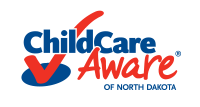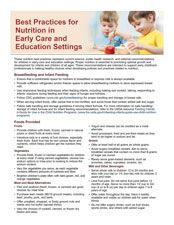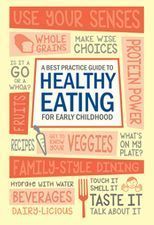Best Practices for Nutrition
Proper nutrition is essential to promoting optimal growth and development for infants and children of all ages. These recommendations are intended to support early childhood professionals in making healthy choices when developing policies and practices related to nutrition.
HAVE A QUESTION?
Contact a Health & Safety Consultant: 800-997-8515
Submit a question or request individualized support ➜
-
View/Download Printer-Friendly PDF
-
This guide is a companion to North Dakota’s Early Learning Guidelines. It offers practical ways parents, families, and early care and education (ECE) providers can promote healthy foods and eating experiences to children ages 2 to 5 years old. All information in this guide is based on current science, research and national best practices.
-
Support Breast Feeding
-
Provide comfortable and accessible space for mothers to breastfeed or express milk
-
Provide sufficient refrigerator/freezer space to store expressed breast milk.
-
Follow Infant Feeding Guidelines
-
Use responsive feeding techniques
Make eye contact and talk with the infant during feeding. Respond to their reactions during feeding and their signs of hunger and fullness.
-
Avoid infant foods with added salt and sugar
offer cereal that is iron-fortified, and avoid foods that contain added salt and sugar.
-
This guide is a training tool for CACFP operators with infants enrolled at their child care site.
-
Choose Healthy Foods & Beverages
-
Offer fruits without added sugar
- Provide children with fresh, frozen, canned in natural juices or dried fruits at every meal.
- Introduce kids to a variety of fruit choices, especially fresh fruits. Each fruit has its own unique flavor and nutrients, which helps children get the nutrition they need. -
Brighten their meal with vegetables
- Provide fresh, frozen or canned vegetables for children at every meal. If using canned vegetables, choose low sodium options or rinse prior to cooking to reduce the sodium content.
- Vary the vegetables you serve, as each vegetable contains different amounts of nutrients and fiber.
- Brighten children’s plate often with dark-green, red, and orange vegetables. -
Serve meat and meat alternatives
- Fish and seafood (fresh, frozen, or canned) are good choices for meal time.
- Purchase lean meats (90/10 ground meats), including beef, poultry, pork, and lamb.
- Offer unsalted, chopped, or finely ground nuts and seeds and nut butter (spread thinly).
- Vary the choices of cooked, canned, or frozen dry beans and peas.
- Yogurt and cheese can be credited as a meat alternate.
- Avoid processed, fried and pre-fried meats as they tend to be higher in sodium and fat. -
Focus on whole grains
- Offer at least half of all grains as whole grains.
- Avoid sugary breakfast cereals. Aim to serve breakfast cereals that contain no more than 6 grams of sugar per ounce.
- Rarely serve grain-based desserts, such as brownies, cakes, cupcakes, cookies, etc. -
Serve milk & water - limit fruit juices
- Serve whole milk to children 12 to 24 months and skim milk (non-fat) or 1% (low-fat) milk for children 2 years and older.
- Limit fruit juice. Do not serve fruit juice before 12 months of age. Serve no more than 1/2 cup to 3/4 cup (4 oz to 6 oz) per day to children ages 1 to 6 years of age.
- Offer water throughout the day. Have it readily available and visible so children ask for water when thirsty.
- Do not offer sugary drinks, such as fruit drinks, sports drinks, and others with added sugar.
-
Limit Use of High-Sodium Foods
-
Use herbs and spices for flavor instead of salt
-
Limit use of condiments
Condiments such as soy sauce, ketchup, and ranch dressing can be high in sodium so offer only small portions, if using.
-
Be Mindful of Allergies
-
Talk with parents about food allergies
Ask parents if they know of any food allergies that their child may have and document their answer along with a plan of care, if needed.
-
Watch for common food allergies
The most common food allergies are peanuts, milk, eggs, soy, wheat, tree nuts, fish, and shellfish.
-
Make Mealtime a Pleasant Experience
-
Serve family-style whenever possible
This meal style teaches children, who are developmentally ready to serve most or all foods themselves, how to make food choices and choose portion sizes.
-
Offer no-stress opportunties to try new foods
Praise children for trying new or less-preferred foods. Do not bribe or offer treats to encourage children to try new foods.
-
Help children understand feelings or fullness or hunger
Before removing plates or offering seconds, ask children if they are hungry or full in order to help children understand their feelings of hunger or fullness. Do not require children to clean their plates.
-
Provide Supervision
-
Supervise children during meals & snack time
Kids typically can’t make any noise to alert you that they’re choking. Children should be closely supervised and kept within sight and hearing when eating or drinking.
-
Role-Model Healthy Eating
-
Avoid eating or drinking unhealthy foods in front of children
Be an enthusiastic role model for eating healthy foods to children during meals and snacks.
-
Choose toys & books that promote healthy eating
Utilize a variety of posters, books, healthy play foods, and other learning materials to promote healthy eating.
-
Store & Handle Food Safely
-
Clean fresh produce
Rinse all produce thoroughly under running water before eating, cutting, or cooking.
-
Cook foods to proper internal temperature
Use a thermometer to check.temperatures to determine when a meat, fish, poultry, or egg dish is fully cooked.
-
Keep cold food cold and warm food warm
Cold food should be held at below 40°F and warm foods should be held above 140°F.
-
Limit the chances of food borne illnesses
Keep produce and ready to eat foods separate from raw meat while shopping, preparing, or storing them to limit the chances of food borne illnesses.



